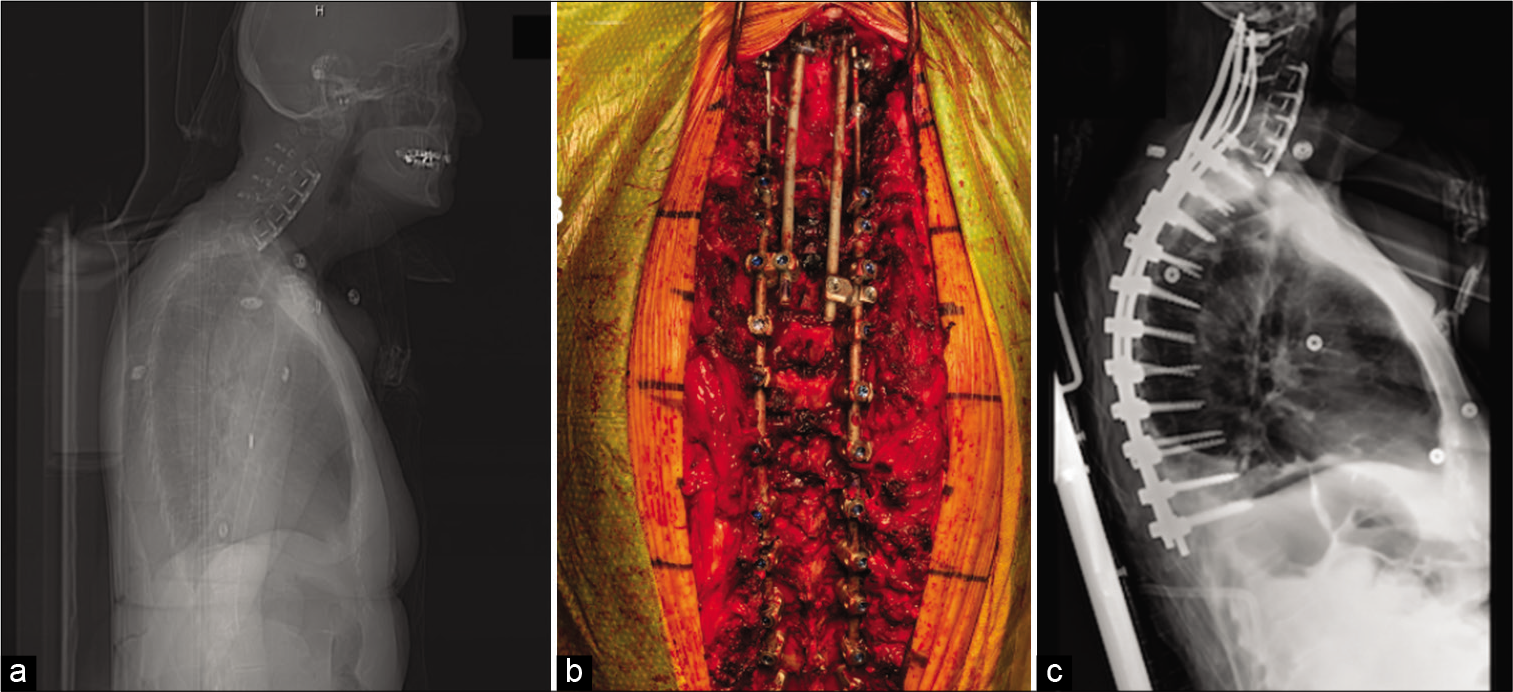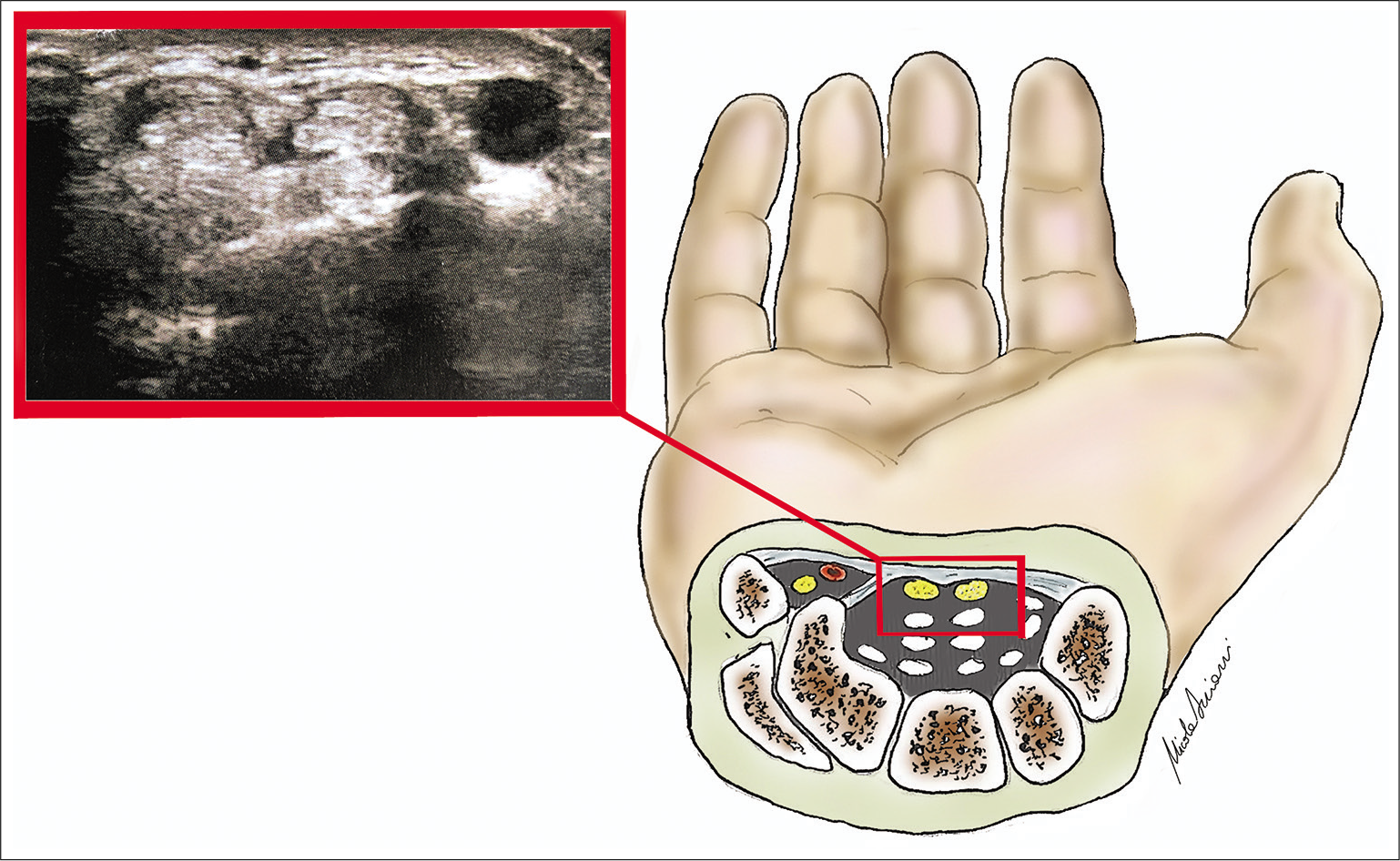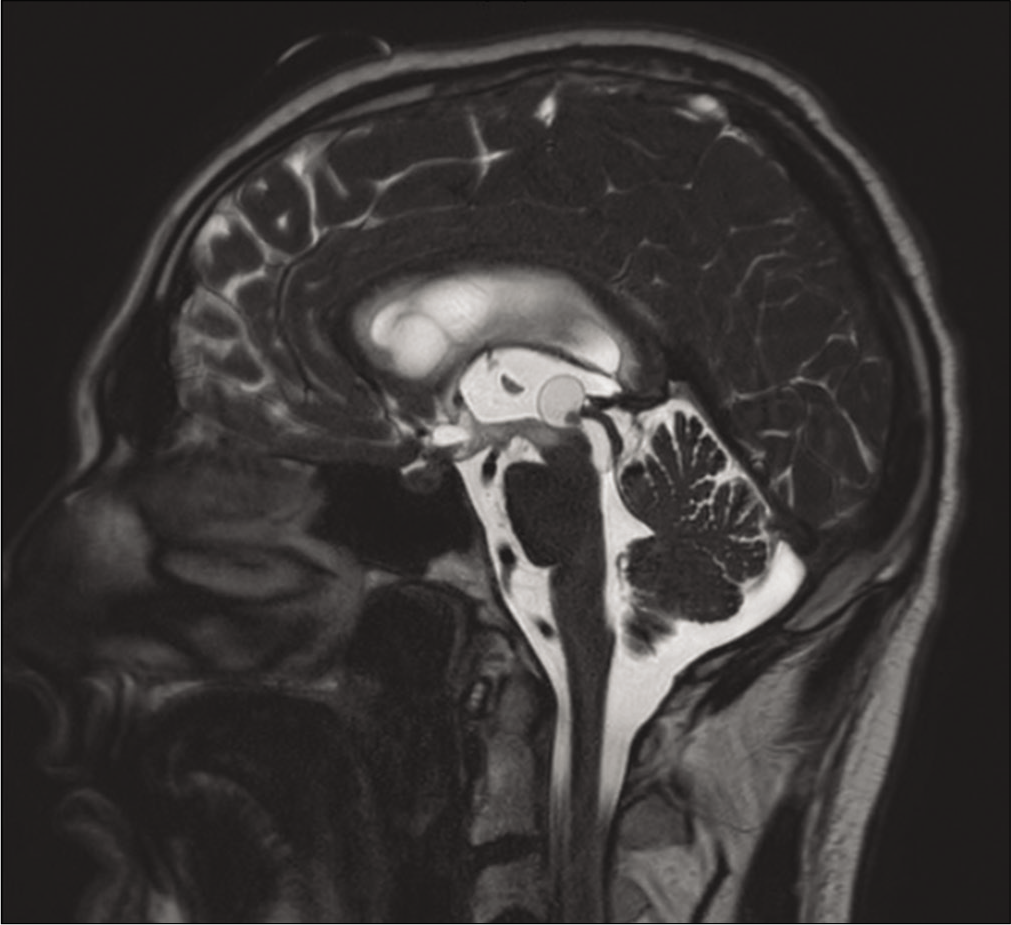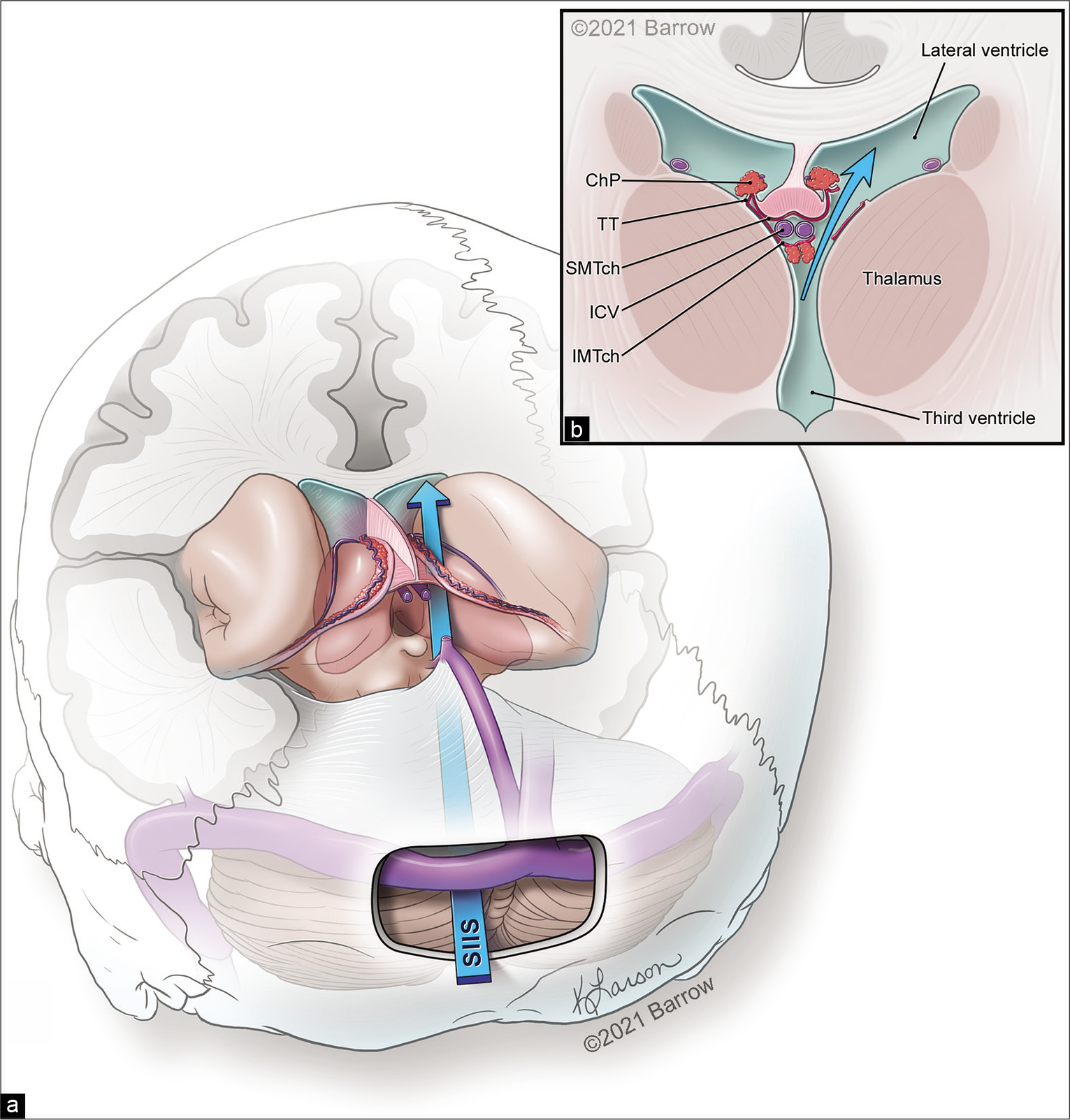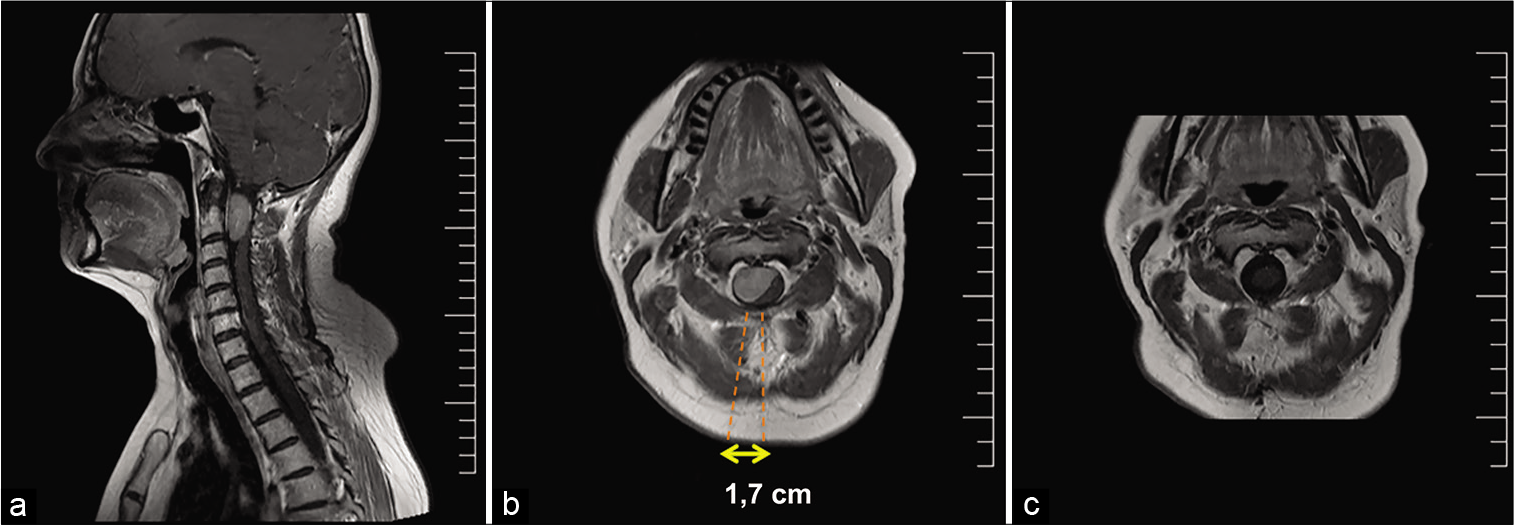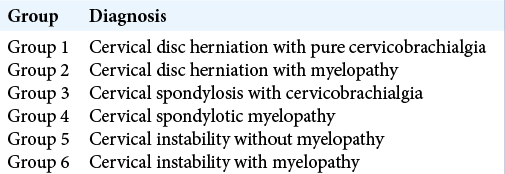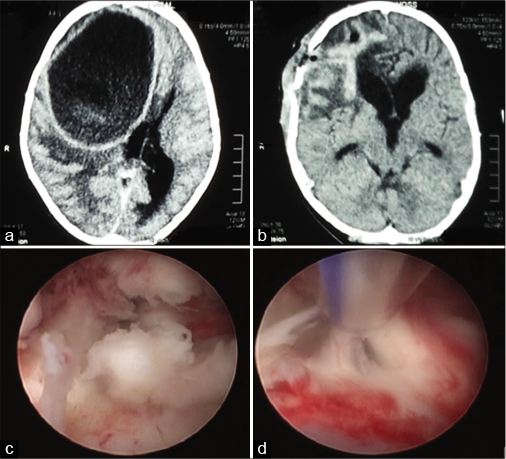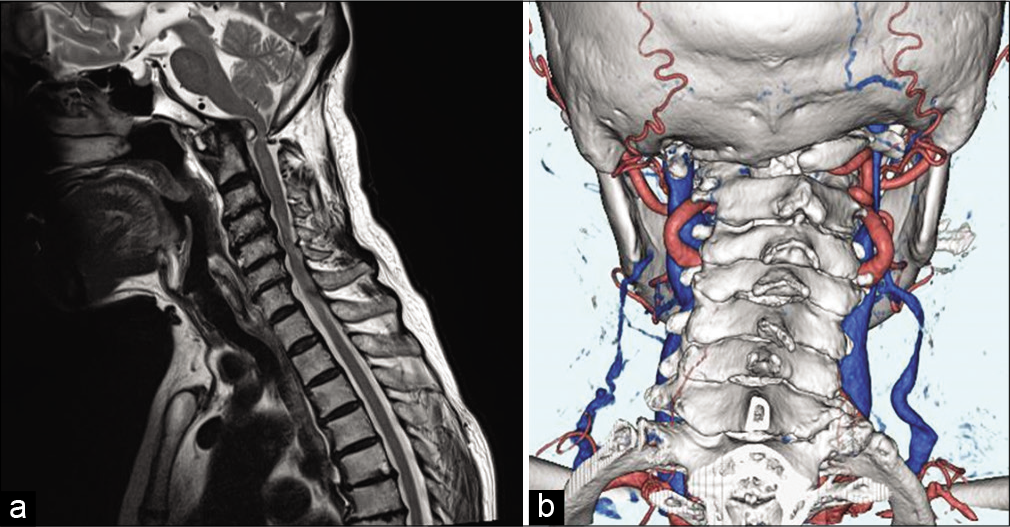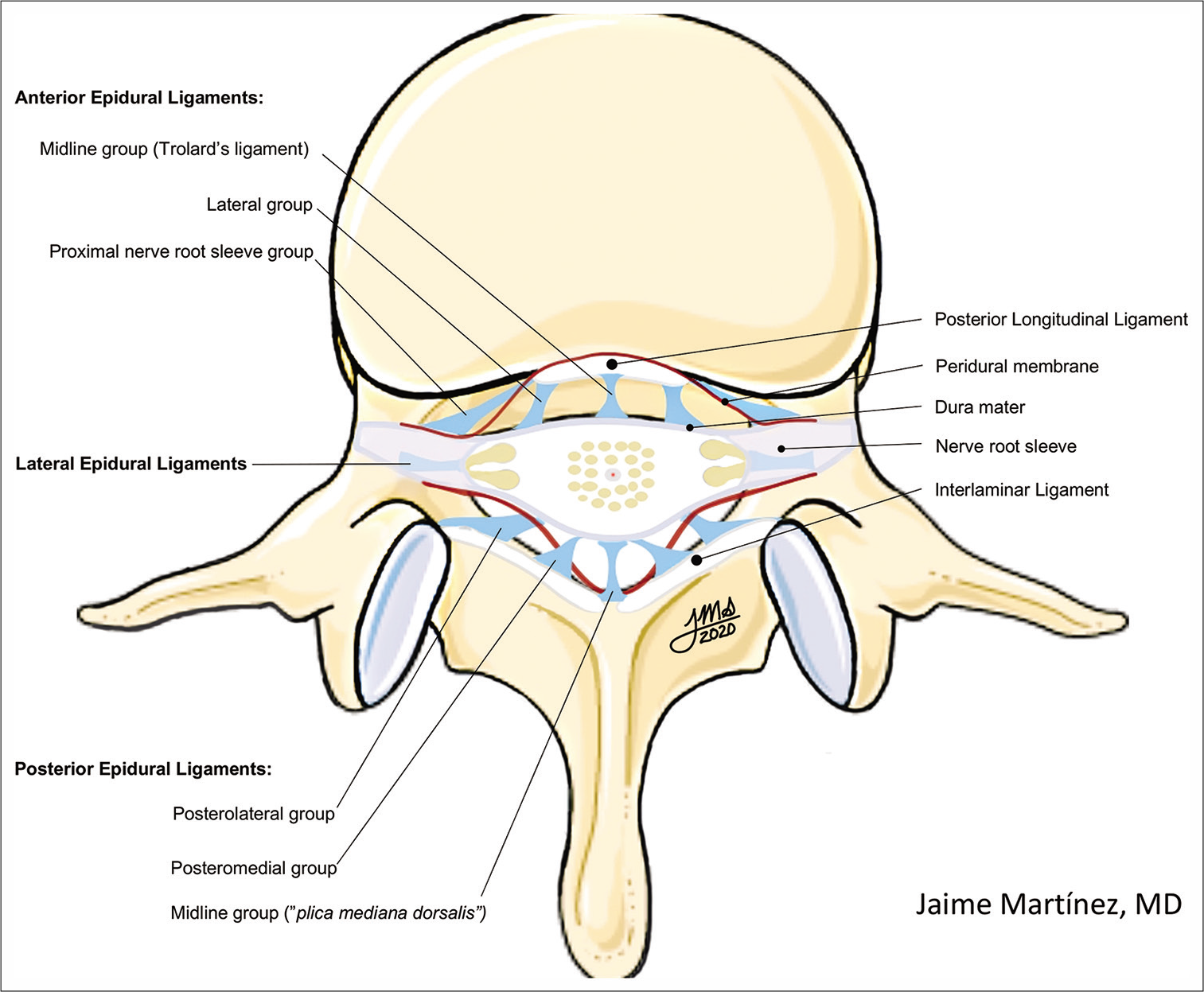C2 quad-screws facilitate 4-rod fixation across the cervico-thoracic junction
Date of publication: 03-Feb-2021
Background: Cervical spine deformity is a potentially devitalizing problem. Contemporary techniques for repair and reconstruction include fusion using rods of tapered diameter alone, or quadruple-rod constructs in which primary rods are joined to floating accessory rods by connectors. Here, we present how we utilized a quadruple-rod construct to perform five C2 to thoracic spine fusions.
Carpal tunnel syndrome caused by the entrapment of a bifid Lanz IIIA Type anatomical variant of median nerve: A case report and systematic literature review
Date of publication: 03-Feb-2021
Background: Carpal tunnel syndrome (CTS) is the most common entrapment peripheral neuropathy. Median nerve may present several anatomical variations such as a high division or bifid median nerve (BMN). A thorough knowledge of the normal anatomy and variations of the median nerve at the wrist are fundamental to reduce complications during carpal tunnel release.
Endoscopic removal of intraventricular neurocystercercosis
Date of publication: 03-Feb-2021
Supracerebellar infratentorial inverted subchoroidal approach to lateral ventricle lesions: Anatomical study and illustrative case
Date of publication: 03-Feb-2021
Background: This study provides an anatomical description of a novel supracerebellar infratentorial inverted subchoroidal (SIIS) approach to the lateral ventricle. An illustrative case is presented in which this approach was used to simultaneously resect two tumors residing in the posterior fossa and lateral ventricle.
Abordaje mínimamente invasivo para el tratamiento de tumores espinales intradurales extramedulares: Nota Técnica
Date of publication: 03-Feb-2021
Objetivo: Describir la técnica de abordaje mínimamente invasiva para el tratamiento de tumores intradurales extramedulares en los diferentes segmentos espinales.
Anterior cervical spine surgical complications: Safety comparison between teacher and student
Date of publication: 03-Feb-2021
Background: Anterior cervical surgery has a widespread use. Despite its popularity, this surgery can lead to serious and life-threatening complications, and warrants the attention of skilled attending spinal surgeons with many years of experience.
Endoscopic treatment of brain abscess
Date of publication: 28-Jan-2021
Background: Treatment of brain abscess is still a subject of controversy. The main treatment is surgical, although medical therapy alone can be used for selected cases. The treatment of choice is aspiration, which may be performed with the aid of an endoscope or by freehand technique, with or without stereotactic or intraoperative ultrasound guidance. Excision is valuable in some cases. We are reporting our results of endoscopic approach in 12 patients.
Leveraging social media and digital technology to market and meet the needs of neurosurgery patients
Date of publication: 28-Jan-2021
Abstract
The digital era has arrived in healthcare. Health-care consumers, including neurosurgery patients, are increasingly using social media and other digital technologies to meet their health-care needs. In this work, we describe an illustrative case from Mayo Clinic where interlacing social media strategies are leveraged to educate and engage patients. These strategies not only provide a valuable service to patients but they also reinforce the brand and serve as a marketing tool. Other digital technologies such as health-care apps and telemedicine are also adaptations that help meet the needs of the current neurosurgical patient. Similar to consumer trends in other service industries, these technologies provide patients with greater autonomy, convenience, and personalization. The digital era in health care presents an exciting opportunity for health-care organizations and providers to innovate, evolve, and improve the health of our patients.
Resolution of retro-odontoid cyst in a patient with atlanto-occipital assimilation after occipitocervical fixation
Date of publication: 28-Jan-2021
Background: Fusion of the atlas with the lower part of the occiput is clinically known as atlanto-occipital assimilation (AOA) or atlas occipitalization. This can be either partial or complete depending on the extent of fusion. AOA is one of the most common congenital anomalies of the craniovertebral junction and is usually asymptomatic.
Anatomy of the posterolateral spinal epidural ligaments
Date of publication: 28-Jan-2021
Background: The epidural ligaments (ELs) (of Hofmann) were described as fibrous bands interconnecting the ventrolateral spinal dura and the posterior longitudinal ligament below L1. They are hardly ever discussed in the literature or considered in hypothesis-driven basic science experiments or spine biomechanical models.


